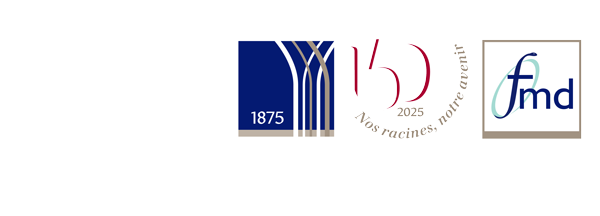Projets de Recherche
Maxillary dentition effects of space closure with sliding mechanics on different archwire sizes: a 3D finite element analysis.
Description :
A patient, having a CBCT already taken for other purpose, will be selected from the archives of the department of orthodontics, Faculty of Dental Medicine at Saint Joseph University of Beirut. While loading the different configurations of the maxillary model, we will be simulating a first premolar extraction space closure using three different stainless-steel archwires (0.017 × 0.025 SS, 0.018 x 0.025 SS, and 0.019 x 0.025 SS) while observing the changes on the anterior teeth torque, occlusal plane rotation and anchorage control. 11.1. Image acquisition A CBCT record will be collected from the radiology department of Saint Joseph University of Beirut Faculty of Dental Medicine. We will acquire the CBCT using the Newtom VGI CBCT machine 15 x 15 field of view and 0,3mm voxel size (QR s.r.l via Silverstrini, 20-37135-Verona, Italy). Projection data will be collected with a device rotating 360 degrees around the patient over a total acquisition time of 18 seconds. 11.2. Head orientation Images will be evaluated in the NNT 5.6 software (QR s.r.l via Silverstrini, 20-37135-Verona, Italy). Axial images will be re-oriented according to the occlusal plane horizontal and exported as DICOM datasets. 11.3. Segmentation and construction of the geometric model The geometry of the 3D finite element model of the maxilla and their periodontal structures, i.e., PDL, alveolar bone will be constructed from a computed tomography scan image of a skull. These data will be exported to 3D image processing and editing software Blue Sky Plan® 4.5 (Blue Sky Bio, LLC, Grayslake, IL, USA). With the help of Meshmixer 3.5 software, geometric model was constructed consisting of only surface data. Brackets (Edgewise 0.022” x 0.028”), archwires 0.017” × 0.025” SS, 0.018” x 0.025” SS, and 0.019” x 0.025” SS, will be virtually modeled using reverse engineering technique. The space will be closed by using a NiTi coil spring delivering 150 g of force (11) extending from the first molar to a 4 mm height hook soldered distally to the bracket of the lateral incisor (12,13). Figure eight ligatures will be placed in the posterior and anterior sector to group the teeth together in each sector. 11.4. Meshing Finite Element Model uses a complex system of points (nodes) and elements, which make a grid called as mesh. Basic theme of FEA is to make calculations at only limited (finite) number of points and then interpolate the results for entire domain (surface or volume). Any continuous object has infinite degrees of freedom and it is just not possible to solve the problem in this format. FEA reduces degrees of freedom from infinite to finite (as shown in the image below). In this study we used the Meshmixer 3.5 software to perform this step. 11.5. Incorporation of material properties of tooth structure and periodontium The material properties of teeth, PDL, and alveolar bone used were the average values reported in literature. The thickness of the PDL was determined to be a uniform 0.2 mm (6,7). The coefficient of friction between the bracket slots and archwire was assumed to be 0.2 (8,9). All materials employed for the finite element model study were taken to be isotropic, homogenous, and linearly elastic. 11.6. Defining boundary condition Post-finite element model construction, the boundary condition of these models needs to be defined so that all movements of the model are restrained. Such restraining is necessary to prevent the model from any type of body motion while the load is acting. In this study, the fixed boundary condition was maintained at the base of the maxilla and was constrained in all directions. 11.7. Loading configuration When loading the configuration, we choose the mechanical category of our model and the concentrated force type exerted on our model. Then we select the points of loading and we insert the component values of each force in each plane (x, y, z). 11.8. Translation of results and interpretation Here the results of the analysis are read and interpreted. They can be presented in the form of a contour plot, a table, deformed shape of the component or the mode shapes and natural frequencies if frequency analysis is involved. Most post-processors provide an animation service, which produces an animation and brings the model to life. All post-processors now include the calculation of stress and strains in any of the x, y or z directions or indeed in a direction at an angle to the co-ordinate axes. The principal stresses and strains may also be plotted or if required the yield stresses and strains according to the main theories of failure (10).
Titulaire :BOU SERHAL Joseph
Contact USJ :
joseph.bouserhal@usj.edu.lb
Chercheur(s) :
Pr Joseph BOU SERHAL
Projet présenté au CR, le : 01/09/2020
Projet achevé auprès du CR : 01/09/2022

